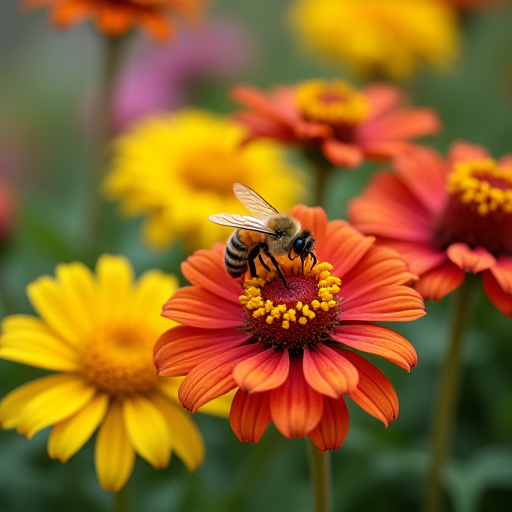
Why Do Bees Pollinate Flowers?
Pollination is a critical process in the reproduction of flowering plants and the production of fruits and seeds. Bees are among the most important pollinators in the world, playing a crucial role in the ecosystem and the agriculture industry. This article delves into the reasons why bees pollinate flowers, exploring the mutualistic relationship between bees and plants, the benefits bees derive from this activity, and the impact on biodiversity and agriculture.
The Mutualistic Relationship
The relationship between bees and flowers is a classic example of mutualism, a type of symbiotic relationship where both parties benefit. Flowers need to be pollinated in order to reproduce and produce seeds, while bees rely on flowers for food. This interdependence has driven the co-evolution of both bees and flowering plants over millions of years.
1. Nutrition for Bees
Nectar and Pollen: Bees visit flowers primarily to collect nectar and pollen. Nectar is a sweet liquid produced by flowers that provides bees with carbohydrates, which are crucial for energy. Pollen, on the other hand, is a rich source of proteins and fats, essential for the growth and development of bee larvae.
Hive Support: For social bees, like honeybees and bumblebees, the collected nectar and pollen are brought back to the hive to feed the colony. Nectar is converted into honey, which serves as a long-term food supply. Pollen is stored in the hive as "bee bread" and used to feed young bees.
2. Plant Reproduction
Cross-Pollination: As bees move from flower to flower in search of food, they inadvertently transfer pollen grains from the male part (anther) of one flower to the female part (stigma) of another. This process, known as cross-pollination, is essential for genetic diversity among plants, leading to healthier and more resilient plant populations.
Flower Adaptations: Many flowers have evolved specific traits to attract bees, such as bright colors, enticing fragrances, and specialized structures like landing platforms. These adaptations help ensure that bees visit them for nectar and, in the process, facilitate pollination.
Benefits to the Ecosystem
1. Biodiversity
Bees contribute significantly to the biodiversity of ecosystems. By pollinating a wide variety of plants, they support the growth of diverse plant communities, which in turn provide habitat and food for a multitude of other organisms, including insects, birds, and mammals.
2. Food Production
Bees are vital for agriculture, as they pollinate many crops that humans rely on for food. According to the Food and Agriculture Organization (FAO), bees and other pollinators affect 35% of global agricultural land, increasing the output of 87 of the leading food crops worldwide. Popular foods such as apples, almonds, coffee, and blueberries all depend on bee pollination.
Threats to Bee Populations
Despite their importance, bee populations are facing significant threats, including habitat loss, pesticide exposure, climate change, and diseases. The decline in bee populations could have dire consequences for ecosystems and agriculture. Efforts to conserve and protect bee habitats are crucial for maintaining the balance of natural and agricultural systems.
Conclusion
Bees pollinate flowers as part of a mutualistic relationship where both bees and plants benefit. Through this process, bees obtain essential nutrients, while plants achieve reproduction and genetic diversity. The role of bees in pollination is critical not only for maintaining biodiversity but also for supporting global food production. Understanding and protecting bees is essential for the health of ecosystems and the sustainability of agriculture. As such, fostering environments that support bee populations should be a priority for societies around the world.
